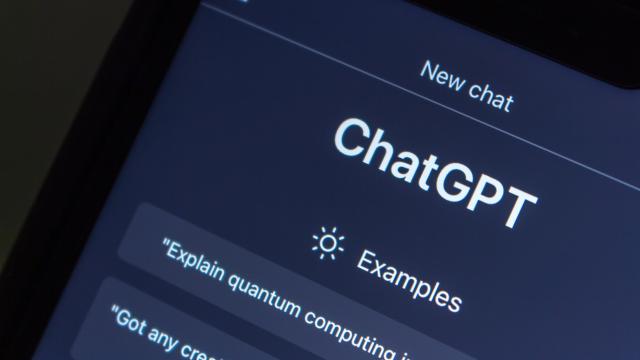We’re all used to the ChatGPT protocol by now. You boot it up, write your query, and the AI reacts accordingly — accuracy not guaranteed. While chatting with ChatGPT is surprisingly human-like, you’re really just texting at the end of the day. The chatbot isn’t at the point where you can have a spoken-word conversation like you would in-person or on the phone. At least, not without a little outside help.
To turn ChatGPT into a vocal conversationalist, enlist the help of TalkBerry, a new Chrome extension from developer Userly Labs. TalkBerry, according to the developer’s Twitter account, seems to have started as a language learning tool powered by AI. But while the TalkBerry chrome extension doesn’t place much of an emphasis on language learning, it does let you speak to ChatGPT with your voice, and have it respond in kind.
TalkBerry is easy enough to set up: Install the extension from the Chrome Web Store, then go to the ChatGPT web app. Here, you’ll notice a new green microphone button. You can click it or press the space bar to activate the microphone, although you need to grant the extension permission to use your mic the first time you do. After that, just start talking. You can end your side of the chat by hitting Enter, and cancel it entirely with Escape.
ChatGPT will process your query and write out its response as per usual. Once it finishes, however, it’ll read the results out loud. You can customise ChatGPT’s voice with the control strip next to the green mic button, too: You can change the language (13 options at this time), speed, and voice (I count 29 English options at the moment). If you want, you could have ChatGPT respond in another language, which makes the TalkBerry extension a bit like the language-learning app its developers originally created. It works well, and it’s seamless to setup, so kudos to the developer.
But TalkBerry is more than a neat trick, or one step closer to what the movie Her predicted in 2013. By allowing ChatGPT to be vocally interactive, it opens the chatbot up to users who are visually impaired. There’s no need for workarounds here: A simple button press lets you speak with ChatGPT, and another press soon initiates a spoken result in return. Tools like ChatGPT should be available to as many people as possible. I’m sure the future will bring a more accessible AI, just as accessibility features have evolved in current tech. But until then, tools like TalkBerry make it possible to for more people to experience ChatGPT and the burgeoning consumer AI experience:
I had a back and forth voice conversation with Chat GPT today. Pretty sweet.
Now my dad—who is blind—can join the AI fun too!
Add the TalkBerry Chrome Extension to start chatting.
Thanks @bentossell for sharing the link on @bensbitesdaily!https://t.co/L4phugkXif
— Suzanne (@unicornfuel) March 31, 2023
There is a privacy angle to consider here, however. TalkBerry does claim it accesses “User activity,” a vague idea that, according to Chrome, could mean anything from network monitoring to keystroke logging. The developer claims your data isn’t used outside the core functionality of the extension, won’t be sold to third-parties “outside approved use cases,” and isn’t used to determine creditworthiness (not that that would ever cross my mind). Plus, if you dive into its settings, it only has access to the ChatGPT web app, so it shouldn’t be able to interact with your activity across other apps and sites.
I’ll take an optimistic approach here, and assume “user activity” is simply the data needed to power TalkBerry and turn your spoken words into a ChatGPT prompt. However, you can always turn TalkBerry off anytime you aren’t using it, just to be safe.

Leave a Reply
You must be logged in to post a comment.